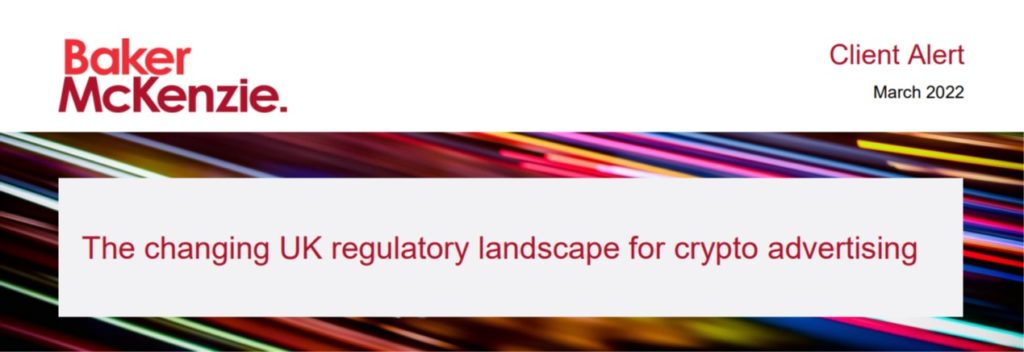
On 18 January 2022, HM Treasury confirmed that it will bring certain cryptoassets into the scope of the financial promotion regime. The Treasury’s view is that the evidence of risks to consumers provides a strong case for intervention, and as such it intends to expand the scope of the Financial Promotions Order (FPO) to include cryptoassets. The Treasury’s announcement was followed the next day by the launch of an FCA consultation on strengthening the financial promotion rules for high-risk investments, including cryptoassets.
These proposals also complement broader work by the Treasury to improve the financial promotion regime, including the proposed new regulatory gateway (“s21 Gateway“) for authorised firms who approve the financial promotions of unauthorised firms (“s21 Approvers“) and the consultation on reforms to the FPO exemptions for high net worth and sophisticated investors. The expansion of the FPO regime to include cryptoassets also sits within the Treasury’s wider work on bringing cryptoassets within the regulatory perimeter, including its consultation on a regulatory regime for stablecoins (for more on those proposals, see our related alert).
The expansion of the FPO regime will introduce added complexity to the current regulatory approach to cryptoassets, with the boundaries of application drawn differently in each regime. Crypto businesses will soon need to navigate different and sometimes conflicting scopes of application with respect to the Treasury’s proposed regulation of certain stablecoin service providers, the AML/CTF regime under the Money Laundering, Terrorist Financing and Transfer of Funds (Information on the Payer) Regulations 2017 (MLRs), and the forthcoming FPO regime and the FCA’s proposed financial promotion rules. For more on this complexity, see A mismatch in scope in the full alert.
In this alert, we consider the scope of the strengthened regime and proposed rules, and what they mean for crypto businesses.
Click here to access the full alert.







Log in to access complimentary passes or discounts and access exclusive content as part of your membership. An auto-login link will be sent directly to your email.
We use an auto-login link to ensure optimum security for your members hub. Simply enter your professional work e-mail address into the input area and you’ll receive a link to directly access your account.
Instead of using passwords, we e-mail you a link to log in to the site. This allows us to automatically verify you and apply member benefits based on your e-mail domain name.
Please click the button below which relates to the issue you’re having.
Sometimes our e-mails end up in spam. Make sure to check your spam folder for e-mails from The Payments Association
Most modern e-mail clients now separate e-mails into different tabs. For example, Outlook has an “Other” tab, and Gmail has tabs for different types of e-mails, such as promotional.
For security reasons the link will expire after 60 minutes. Try submitting the login form again and wait a few seconds for the e-mail to arrive.
The link will only work one time – once it’s been clicked, the link won’t log you in again. Instead, you’ll need to go back to the login screen and generate a new link.
Make sure you’re clicking the link on the most recent e-mail that’s been sent to you. We recommend deleting the e-mail once you’ve clicked the link.
Some security systems will automatically click on links in e-mails to check for phishing, malware, viruses and other malicious threats. If these have been clicked, it won’t work when you try to click on the link.
For security reasons, e-mail address changes can only be complete by your Member Engagement Manager. Please contact the team directly for further help.